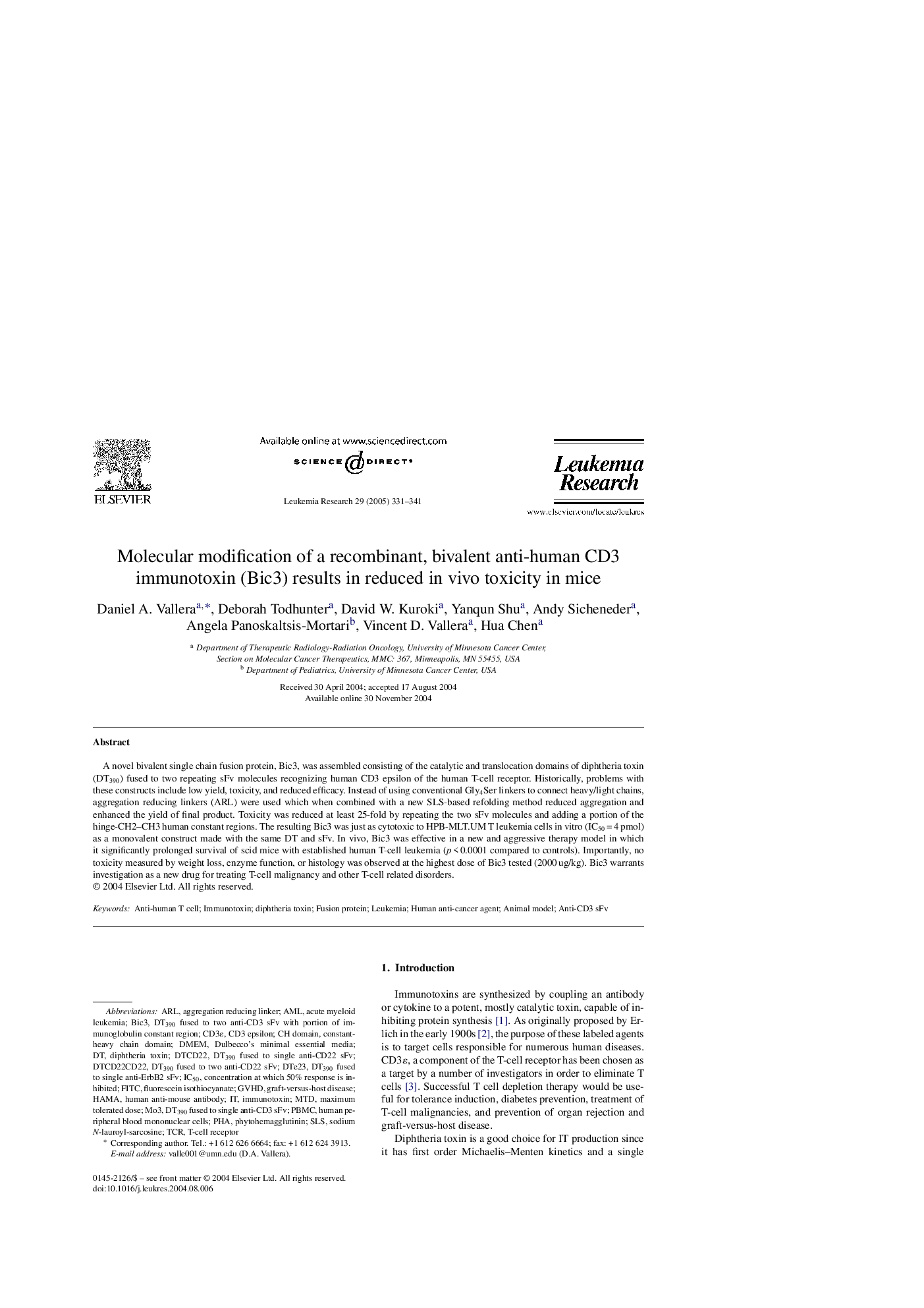| کد مقاله | کد نشریه | سال انتشار | مقاله انگلیسی | نسخه تمام متن |
|---|---|---|---|---|
| 10909576 | 1087920 | 2005 | 11 صفحه PDF | دانلود رایگان |
عنوان انگلیسی مقاله ISI
Molecular modification of a recombinant, bivalent anti-human CD3 immunotoxin (Bic3) results in reduced in vivo toxicity in mice
دانلود مقاله + سفارش ترجمه
دانلود مقاله ISI انگلیسی
رایگان برای ایرانیان
کلمات کلیدی
MTDDulbecco's minimal essential mediaAMLGvHDCH domainARLPhytohemagglutininTCrIC50PHAFITCSLSDMEMPBMCHuman anti-mouse antibody - آنتی بادی ضد موش انسانImmunotoxin - ایمونوتوکسینGraft-versus-host disease - بیماری مرض در برابر میزبانdiphtheria toxin - توکسین دیفتریMaximum tolerated dose - حداکثر دوز قابل تحملHuman peripheral blood mononuclear cells - سلول های تک سلولی خون محیطی انسانfluorescein isothiocyanate - فلوئورسین ایسوتیوسیاناتleukemia - لوسمیacute myeloid leukemia - لوسمی حاد میلوئیدی یا به اختصار AMLAnimal model - مدل حیوانیHAMA - هماFusion protein - پروتئین فیوژن یا پروتئین همجوشیT-cell receptor - گیرنده لنفوسیت T
موضوعات مرتبط
علوم زیستی و بیوفناوری
بیوشیمی، ژنتیک و زیست شناسی مولکولی
تحقیقات سرطان
پیش نمایش صفحه اول مقاله

چکیده انگلیسی
A novel bivalent single chain fusion protein, Bic3, was assembled consisting of the catalytic and translocation domains of diphtheria toxin (DT390) fused to two repeating sFv molecules recognizing human CD3 epsilon of the human T-cell receptor. Historically, problems with these constructs include low yield, toxicity, and reduced efficacy. Instead of using conventional Gly4Ser linkers to connect heavy/light chains, aggregation reducing linkers (ARL) were used which when combined with a new SLS-based refolding method reduced aggregation and enhanced the yield of final product. Toxicity was reduced at least 25-fold by repeating the two sFv molecules and adding a portion of the hinge-CH2-CH3 human constant regions. The resulting Bic3 was just as cytotoxic to HPB-MLT.UM T leukemia cells in vitro (IC50 = 4 pmol) as a monovalent construct made with the same DT and sFv. In vivo, Bic3 was effective in a new and aggressive therapy model in which it significantly prolonged survival of scid mice with established human T-cell leukemia (p < 0.0001 compared to controls). Importantly, no toxicity measured by weight loss, enzyme function, or histology was observed at the highest dose of Bic3 tested (2000 ug/kg). Bic3 warrants investigation as a new drug for treating T-cell malignancy and other T-cell related disorders.
ناشر
Database: Elsevier - ScienceDirect (ساینس دایرکت)
Journal: Leukemia Research - Volume 29, Issue 3, March 2005, Pages 331-341
Journal: Leukemia Research - Volume 29, Issue 3, March 2005, Pages 331-341
نویسندگان
Daniel A. Vallera, Deborah Todhunter, David W. Kuroki, Yanqun Shu, Andy Sicheneder, Angela Panoskaltsis-Mortari, Vincent D. Vallera, Hua Chen,